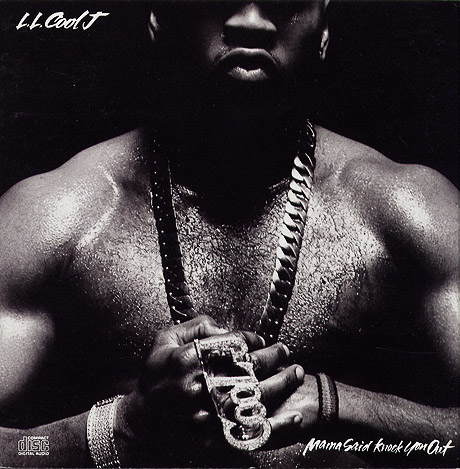A couple of days later LL had done a fashion shoot for Italian Vogue. And I guess the photographer, Michel Comte, had gotten him to take his shirt off because he was trying to play up the sex symbol angle. LL walked into the office with a couple of prints that the magazine had made for him. And he was really excited and he wanted everybody to see it. He said, what do you guys think about using this as the front cover? The photo was already cropped so you couldn’t see his face. He said, we could use this as the front cover, and we could use this [other photo] as the back cover. At that time seeing photography that’s larger than 11×17, beautiful black and white prints – it was mesmerizing. I remember thinking that it was some of the most amazing photography that I’d seen up to that point. And we decided to use those photos for the cover.
I thought it would be great if we could not put any type on the cover. But at the time that was a revolutionary idea for a hip-hop album. The rock boys had done it. I believe Miles Davis had already done it with the Tutu record. But nobody in hip-hop had done that. And naturally we got shot down [when we suggested it]. But that’s also why when you look at the type on the record it’s very minimal at the top, almost invisible in a sense. Because I was really trying to get by with as little as possible because I just thought that the photography was so striking. I just thought, okay, I want to come up with some delicate, hand-done type to accompany it. So I did hand lettering for the whole package.




